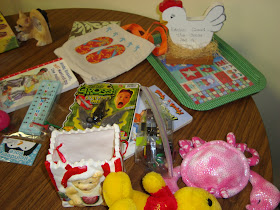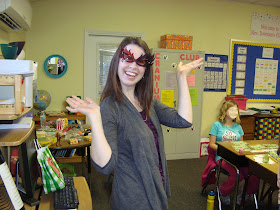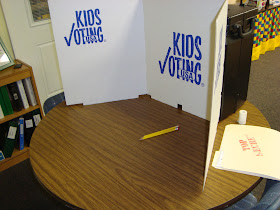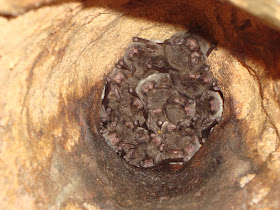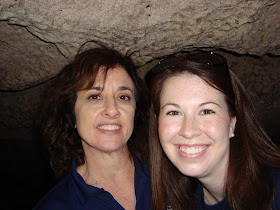I don't teach civics or even history, but I wanted to do something special for the 2012 election. In early October, I decided that my students would learn as much as they could about the upcoming presidential election, including the voting process and where the candidates stood on certain issues.
My class has a global connection with another Christian school in Lima, Peru, so I wanted to somehow bring that 5th grade class into this project as well. I communicate with the 5th grade teacher in Peru via email, so we sent messages back and forth and agreed to collaborate on an election project in which each class would teach the other. My students would learn about certain aspects of the U.S. government and then present to the students in Peru and they would, in turn, teach us about the Peruvian government.
By the way, did you know that it is mandatory for people, 18 and older, to vote in Peru?! My students were shocked by this. Anyway, I knew this task would be challenging for my students because, unfortunately, American government isn't really taught in our elementary school. The children learned a
little about the three branches of government in 4th grade, but nothing in-depth. This makes me sad because we live in the capital city of our state; my students should know more about the government (both locally and nationally). Well, they definitely know more now than they did three weeks ago!
I presented the project idea to my students and they were
so excited about becoming "experts" in order to teach their peers in Peru. The students came up with a list of questions that the children in Peru might ask. Then, they decided to research the questions using a variety of sources. Soon, we received an email from the students in Peru with their
own questions--and, boy, did they come up with some great questions! My students realized they needed to learn a lot!
I checked out every book that dealt with government that I could find from the local library and read aloud as much as I could. What I couldn't read aloud, I kept in our reading center for the students to peruse. One day, we even did Switcharoo Reading (
I just made that term up) in which each child got a book, read as much as he/she could in 3 minutes (and could even take notes if he/she found any "funky facts"), and then, once the time was up, I yelled, "SWITCHAROO!" and they would pass their book to the person on the right and time would begin again. I showed BrainPop videos and my students took notes. We learned about democracy, political parties (and their origins), political beliefs, primaries and caucuses, presidential power, presidential elections, and voting. We graphed voter turnout since 1972 (the first election in which the voting age was lowered to 18) and my students even conducted a poll at car pick-up time to see how many adults were registered to vote and how many of them were planning on voting in the 2012 election. We then graphed
those results.


Once I felt that the students were prepared to work on their own, I split the class into two groups. Each group had to focus on a topic that they wanted to present to the children in Peru. Their task was to create a 3 minute iMovie on their topic(s). The students came up with their own ideas, topics, scripts, and plans; I just monitored. One group decided to focus on voting, the Electoral College, and the roles of the President and Congress by creating an informative newscast. The other group focused on political party beliefs (Democrats and Republicans) and the differing views of the candidates, Barack Obama and Mitt Romney. They also created an informative (yet entertaining) newscast called "Presidential Sports" in which one team was trying to beat the other...and they left the audience wondering, "Who will win?!" As for the differing views, the students focused on education, healthcare, and military spending. I wish I could show the videos here, but I don't have parent permission. The students did a good job, however.
On the day of the election, I set up my room as a mock polling place. The students had to fill out a registration form in one area in order to be able to vote.
I only had one privacy carrel, so some of my students had to wait a while. I told them, "You may have to wait a little while before it's your turn to vote. Be patient; this is exactly what it's like at some polling places!" ;) Geez Louise, in the 2008 election, my hubby and I waited in line for an hour and a half!
Once each child voted, they dropped their ballots into the black box and I made sure they were taken to a local place after work to be counted for the
Kids Voting USA program.
The forms looked quite official, eh?
After their vote was cast, each child received an "I Voted" sticker to wear for the day.
Throughout this process, my students and I kept Election Journals (from Scholastic), where we recorded information on the candidates, debates, etc.
There was also an electoral map included in the back. The day after the election, we colored in the red and blue states and saw how Obama won the needed number of electoral college votes (even though there was a LOT of red on the map). I didn't color mine in:
The morning after the election, my students and I discussed the events from the night before. I stayed non-partisan throughout this project and had told the children Tuesday afternoon, "No matter who wins the election, do not come into this classroom tomorrow with a negative attitude." The next day, I could tell that some students were really disappointed, but no one said a negative word about the results.
You may recall from
THIS POST, that my students and I pray for a country around the world each morning. Well, on November 7th, we prayed for
our country. We asked, in Jesus's name, for God to give President Obama wisdom as he makes decisions on our behalf and continued protection over our land and those who are serving in our military in other lands.
As I said before, I don't teach civics, but I'm going to continue to talk to my students and pray with them about our government and current events. I hope this 2012 election project has sparked their interest and they continue to learn about civic duties.




